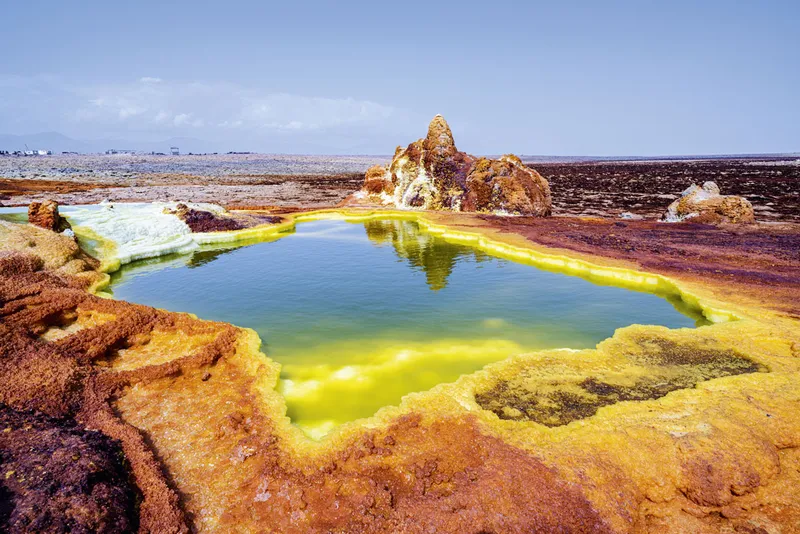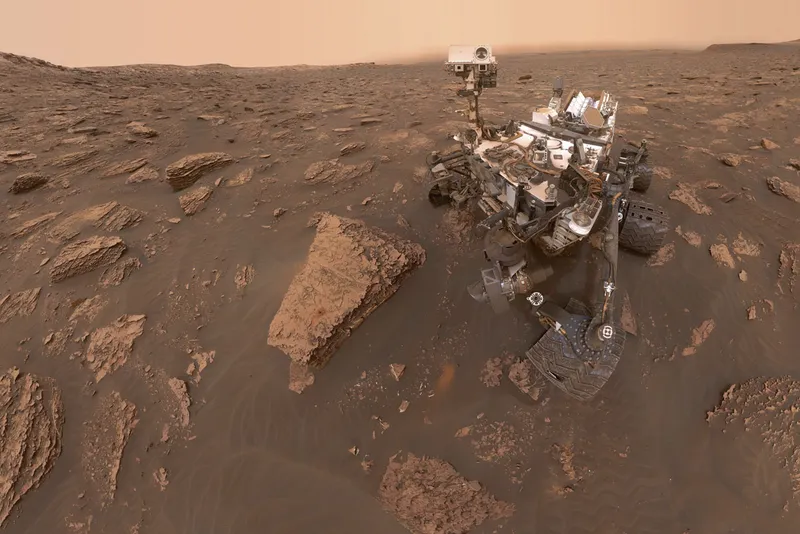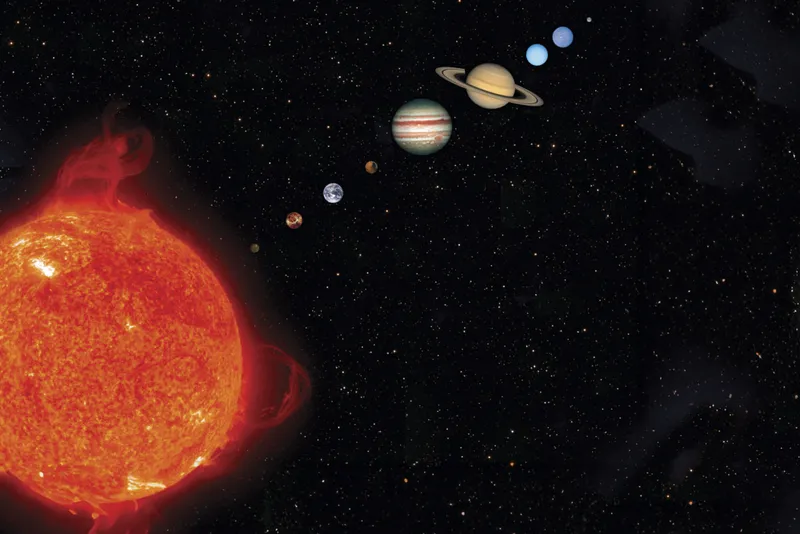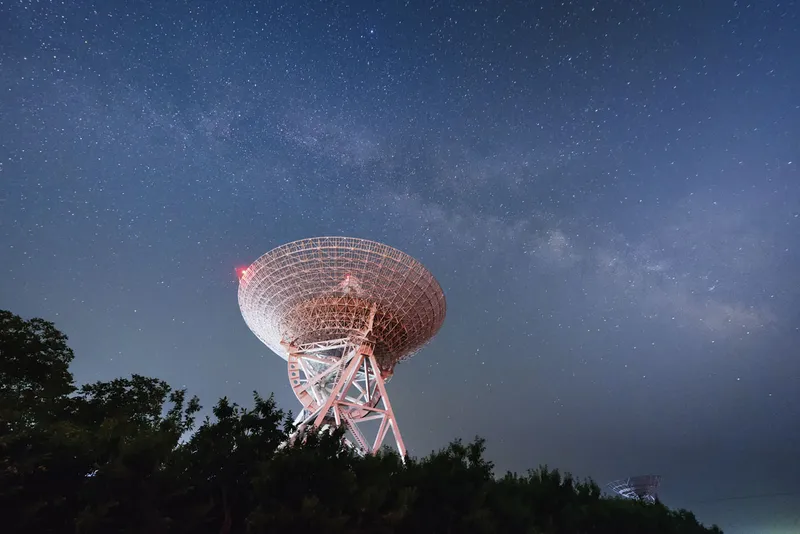There’s never been a more exciting time than right now in the search for life beyond Earth. This fast-paced field is called astrobiology and it’s one of the more interdisciplinary branches of science, combining biology, chemistry, planetary science and astronomy.
Most life in the Milky Way is expected to be single-celled microbial lifeforms, like Earth’s bacteria, but perhaps some worlds support more complex forms of life, such as plants and animals.
Recent advances in three main areas have boosted astrobiologists’ optimism that we could be on the brink of discovering the first signs of extraterrestrial life: extremophiles, exoplanets and robotic exploration.
What three things are making astrobiologists so optimistic about finding life beyond Earth?
1. Extremophiles
The more we learn about micro-organisms on Earth, the more we’re surprised by the incredible adaptability of life.
The hardiest lifeforms are known as extremophiles and they’ve been discovered surviving in some very inhospitable environments.
They’ve been found in boiling-hot hydrothermal vents, beneath freezing-cold glaciers, in acidic pools of volcanic water, deep under Earth’s crust, and even in high-radiation zones.
Extremophiles teach astrobiologists about the outer limits for life and what sort of extraterrestrial environments might be habitable.

2. Exoplanets
Before 1992, the only planets we knew existed in the entire galaxy were the ones in our Solar System. Since then, our telescopes have discovered almost 5,400 worlds orbiting other stars – so-called extrasolar planets, or exoplanets.
Most of the first exoplanets detected were bloated gas giants orbiting exceedingly closely to their suns – not the sort of world we believe could harbour life. But these were just the easiest to detect; we’ve since discovered smaller and smaller exoplanets orbiting further from their stars.
For astrobiology, the most exciting exoplanets are small, rocky, Earth-like ones orbiting the right distance from their stars so that their surface temperatures allow oceans of liquid water.
These are potentially habitable worlds and would offer the best chances for extraterrestrial life. Future space-based telescopes would hopefully be able to detect signs of life – called biosignatures – in their atmosphere, such as the presence of oxygen gas released by photosynthesis.
Read more:
- What are the odds that aliens are humanoid?
- Is searching for aliens worth the risk? Absolutely, says UK’s leading astronomer
3. Robotic exploration of the Solar System
Over recent decades, advances in robotics and the sophistication of scientific instruments have made our space probes more and more capable.
There has been a fleet of orbiter, lander and rover missions launched to Mars, as well as probes sent to explore the outer planets, Jupiter and Saturn, and their families of moons.

Every time we visit another world we learn an enormous amount about its environment, active processes and its history – and invariably spark a whole slew of new questions to answer.
These space probes (as well as telescopes like Hubble) have revealed that a handful of planets and moons in the Solar System have potentially habitable environments that could support extraterrestrial life.
Could aliens be silicon-based?
All life on Earth needs liquid water to survive – it’s very good at dissolving chemicals to support the reactions of biochemistry. Life here is also organic (built from complex molecules based on carbon atoms).
It makes most sense for astrobiology to search for the sort of life we know is possible and we have a good idea how to detect. But could extraterrestrial life be based on a completely different kind of chemistry?
The element silicon sits just below carbon on the periodic table and so, in many ways, its chemistry is similar. But compared to carbon, silicon isn’t nearly as good at forming stable chemical bonds and large, complex molecules. Alien life could be based on solvents other than liquid water, however: perhaps ammonia.
Where in the Solar System could there be alien life?
1. Venus
Today, the surface of Venus is a hellish landscape, hotter than an oven due to the greenhouse effect of the planet’s thick carbon-dioxide atmosphere.
But early Venus may have been more like Earth and there’s a chance that any Venusian microbial life may have been able to survive by migrating high into the atmosphere.
At altitudes of 50-60km (30-40 miles) the temperature is cooler and an aerial biosphere may exist in the clouds. The clouds are highly acidic, though, so Venusian life is probably unlikely.
2. Mars
While the modern surface of Mars is a freeze-dried desert, blasted by ultraviolet rays from the Sun, around 3.8 billion years ago it’s thought to have been much warmer and wetter. There’s evidence of ancient lakes, river valleys and possibly even a large ocean covering the northern hemisphere.
Organic molecules – the building blocks of life – are also thought to have been present on the Martian surface and so maybe the Red Planet developed life of its own. Any Martian microbes are probably long since extinct on the surface but may survive deeper underground.
3. Europa
Europa is one of the large moons orbiting Jupiter. Although its surface is hard-frozen ice, there’s a deep ocean of liquid water beneath it, kept warm by ‘tidal heating’ from the moon flexing and distorting as it orbits in the gas giant’s powerful gravitational field.
This process may also drive hydrothermal vents on the Europan seafloor, which serve as oases for life in Earth’s oceans.
The key question for exploring Europa is, just how thick is its icy shell? And, would it be possible to get some kind of submersible probe beneath it to search for marine life?

4. Enceldaus
Enceladus is a moon of Saturn, but in many ways is like Europa. It has a cold, icy surface and an ocean of liquid water laying underneath that’s in contact with the moon’s rocky core.
Jets of water squirt out of long fractures in the icy crust around the south pole and analysis of these has revealed the water is salty. Organic molecules have also been detected in these plumes and there’s evidence for hydrothermal activity.
So even though this alien ocean is thought to be pretty alkaline, it could still be habitable for life.
5. Titan
Titan orbits Saturn. It’s a giant of a moon, and is the only moon in the Solar System to have a thick atmosphere that is rich with organic chemistry.
Large lakes have been discovered around Titan’s north pole, but these are filled with liquid ethane and methane, rather than water. It’s still an open question as to whether life could be ethane-based rather than water-based, but Titan is a complex world and may harbour lifeforms with a biochemistry very different to those on Earth.
Could aliens be intelligent?
Astrobiology is mostly focused on searching the Solar System for signs of hardy, single-celled life, or detecting atmospheric biosignatures in exoplanets.
But could there be more complex life in the galaxy – alien plants and animals, or even intelligent, space-faring beings?

The galaxy is very old, and intelligent life could have evolved on another habitable world many millions of years before us, and potentially spread across the whole galaxy.
But despite over 60 years of sporadic programmes listening for artificial radio transmissions or looking for signs of technological structures, we’ve not found any convincing evidence of intelligent life out there… yet.
Read more: